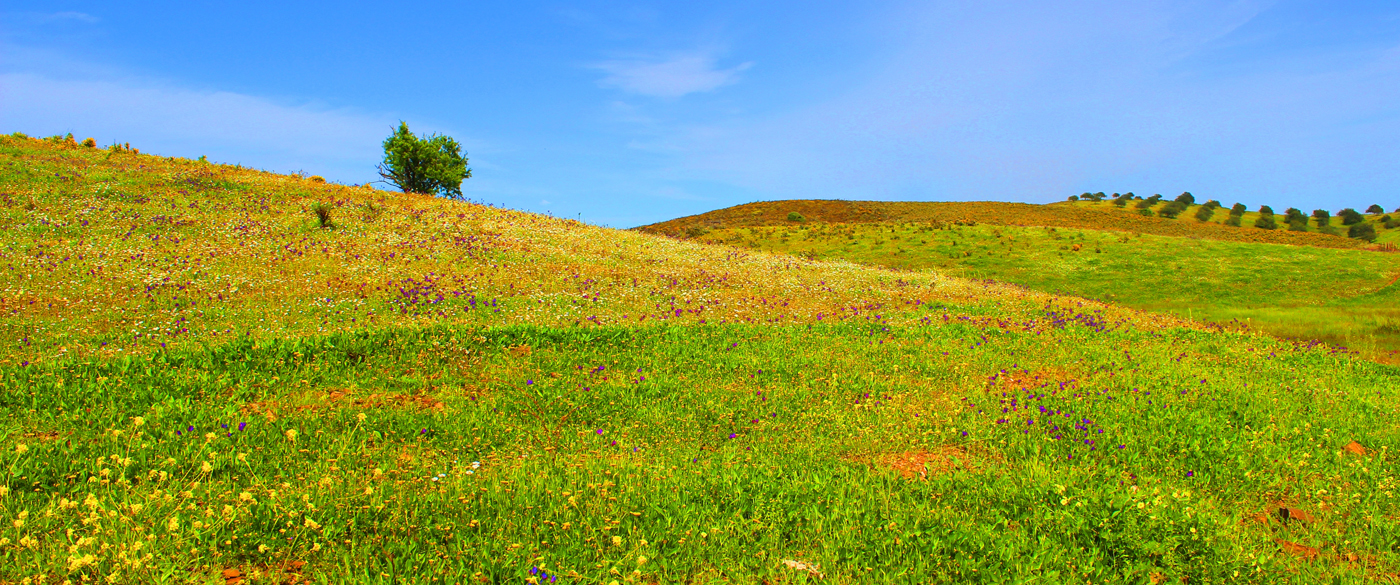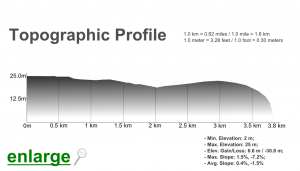
TRAIL FACTSHEET
VENTA MOINHOS TRAIL | BIRDS & NATURE: SEE HERE
Location: Venta Moinhos Salt Marsh, Castro Marim; Castro Marim municipality; GPS Coordinates (decimal degrees): 37.235898 N, -7.442784 W; Grade: easy; Type: out & back trail; the trail is not entirely signposted; Lenght: 7600 meters/ 4.72 miles; Average Completion Time: 2.2 hours; Best Time to Visit: all year round; Activities: nature walks; BTT; birdwatching;
The fourth longest in the Iberian Peninsula (830 km/515 mi), River Guadiana has long been a worthy natural and geostrategic asset both for Portugal and for Spain. Continuously occupied by a sizable human population since the Bronze Age, the frontier region around the old medieval castle of Castro Marim has seen Celts, Phoenicians, Greeks, Romans, Moors and Christians slowly develop a broad productive system based on the natural wealth provided by the plentiful ocean and the generous river.
In effect, part of the explanation why the Algarvian coastal waters are so bountiful lies in the fact that the region’s widespread salt marshes function as a large nursery for juvenile fish species with high commercial value. Here, bordering the most humid soils, there are long-established cultures based on classic Mediterranean food staples – like olive groves and carob tree orchards – in addition to significant stretches of grassland.
 Such triad of differing habitats is precisely what we encounter at the start of the Venta Moinhos salt marsh trail, a location where the pervading topographic plainness is only slightly broken by the gentle rolling hills on the left-hand side, and by the presence of the white sail-like superstructure of Guadiana’s International Bridge. Bundled within a relatively small area, those diverse habitats (or, more accurately, “biotopes”) promoted the presence of almost two hundred different bird species, some of them largely absent from central and northern Europe. It is not uncommon to come across a distinctive marine specimen, like an Audouin’s Gull (Larus audouinii), and at the same time listen to the characteristic loud call of a Great Spotted Cuckoo (Clamator glandarius) perched on a lavish fig tree. In all probability, visitors will also observe Spoonbills (Platalea leucorodia) promenading a deserted saltpan.
Such triad of differing habitats is precisely what we encounter at the start of the Venta Moinhos salt marsh trail, a location where the pervading topographic plainness is only slightly broken by the gentle rolling hills on the left-hand side, and by the presence of the white sail-like superstructure of Guadiana’s International Bridge. Bundled within a relatively small area, those diverse habitats (or, more accurately, “biotopes”) promoted the presence of almost two hundred different bird species, some of them largely absent from central and northern Europe. It is not uncommon to come across a distinctive marine specimen, like an Audouin’s Gull (Larus audouinii), and at the same time listen to the characteristic loud call of a Great Spotted Cuckoo (Clamator glandarius) perched on a lavish fig tree. In all probability, visitors will also observe Spoonbills (Platalea leucorodia) promenading a deserted saltpan.
And, by the way, it is not the warm breeze waggling the yellow long grass, it is instead a band of steppic Little Bustards (Tetrax tetrax) scrambling for cover after spotting an unsuspicious birdwatcher. A few hundred meters ahead there is a junction; here, you can turn right and follow the path leading to the Interpretation Centre (the Reserve’s headquarters), a site that benefits from a raised vantage point over the lagoons and wetlands located along the river’s margins. Return to the main trail, walk for another few dozen meters and then follow the double line of young maritime pines leading to the small whitewashed house on the hilltop; the true extension of the salt marsh will become apparent from this privileged location. However, if you want to take a closer look at the wetlands, make the way back to the aforementioned junction and then follow the route that passes under the bridge. The trail ends in the now redundant border control house. This is a small building that was used to dissuade the crossing of Portuguese and Spanish smugglers, a traditional ‘occupation’ that has fallen through the cracks of time. (See also Castro Marim Nature Reserve Birding Hotspot).
